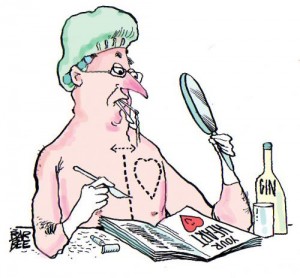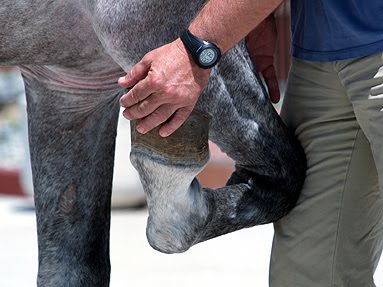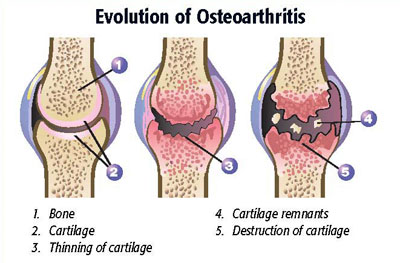 Since there’s so much stuff that’s being advanced to horse owners in hopes of preventing or treating arthritis, I thought it might be interesting to go over the the 2014 recommendations of the Osteoarthritis Research Society International (OARSI) guidelines for the non-surgical management of osteoarthritis of the human knee (that’s the latest – I’m sure there will be an update in another year or two). You can access the OARSI guidelines if you CLICK HERE, but be forewarned, they are meaty, and full of some very dense reading. (I have to admit, I kind of like meaty, dense reading sometimes.)
Since there’s so much stuff that’s being advanced to horse owners in hopes of preventing or treating arthritis, I thought it might be interesting to go over the the 2014 recommendations of the Osteoarthritis Research Society International (OARSI) guidelines for the non-surgical management of osteoarthritis of the human knee (that’s the latest – I’m sure there will be an update in another year or two). You can access the OARSI guidelines if you CLICK HERE, but be forewarned, they are meaty, and full of some very dense reading. (I have to admit, I kind of like meaty, dense reading sometimes.)
 NOTE: A critic might note that OARSI guidelines are for humans. And, to a certain extent, I’d agree with that critic. However, the fact of the matter is that much more research is done on humans than on horses, and that the horse is used as a model for osteoarthritis research in humans. So I think that it’s at least worth a glance to get some idea of what the current thinking is where the most research is done (people), and to see what we might be able to apply to the management of horses.
NOTE: A critic might note that OARSI guidelines are for humans. And, to a certain extent, I’d agree with that critic. However, the fact of the matter is that much more research is done on humans than on horses, and that the horse is used as a model for osteoarthritis research in humans. So I think that it’s at least worth a glance to get some idea of what the current thinking is where the most research is done (people), and to see what we might be able to apply to the management of horses.
 Therapies for human knee osteoarthritis are divided by the OARSI researchers into four categories. Frankly, I’ve never heard of a few of the therapies, which, among other things, probably means that there’s plenty of approaches that are going to hit the horse world, ready or not. The four categories (paraphrased) are:
Therapies for human knee osteoarthritis are divided by the OARSI researchers into four categories. Frankly, I’ve never heard of a few of the therapies, which, among other things, probably means that there’s plenty of approaches that are going to hit the horse world, ready or not. The four categories (paraphrased) are:
- Appropriate treatments for all individuals
- Appropriate treatments for individuals with specific conditions affecting the knee
- Treatments of uncertain appropriateness
- Inappropriate treatments
And here are the therapies that fit into each category.
- Biomechanical interventions, intra-articular corticosteroids, exercise (land-based and water-based), self-management and education, strength training, and weight management.
- Acetaminophen (paracetamol), balneotherapy, capsaicin, cane (walking stick), duloxetine, oral non-steroidal anti-inflammatory drugs (NSAIDs; COX-2 selective and non-selective), and topical NSAIDs
- Acupuncture, avocado soybean unsaponfiables, chondroitin, crutches, diacerein, glucosamine, intra-articular hyaluronic acid, opioids (oral and transdermal), rosehip, transcutaneous electrical nerve stimulation, and ultrasound.
- Risedronate and electrotherapy (neuromuscular electrical stimulation). NOTE: Since they don’t work, I’m not going to discuss them.
Next, let’s break down each of the therapies, and see how they might be applied to horses.
 CATEGORY #1 (Things that are appropriate)
CATEGORY #1 (Things that are appropriate)
Biomechanical interventions are things like knee braces and foot orthotics. Braces don’t have any direct application for horses. As for orthotics (things you stick on your feet), for certain arthritic conditions of the horse, for example, arthritis of the pastern (“ringbone”) people will certainly make recommendations for shoeing changes. My experience with shoeing changes for horses with arthritis is that they are generally of limited value, but probably worth trying because 1) They’re not that hard to do, and 2) They aren’t all that expensive.
Intra-articular corticosteroids are mainstream therapies for equine arthritis. They’re reasonably effective at controlling the signs (lameness and such), and especially if the condition isn’t too bad. Of course, you don’t want to just inject corticosteroids willy-nilly into joints – that’s not good medicine (and horses have developed problems as a result of such indiscriminate injections).
Exercise is a biggie, and, quite simply, many horses don’t get enough of it. I can’t tell you how many stiff and even lame horses get dramatically better when they just have room to move around freely. When it comes to riding horses with arthritis, you kind of have to feel your way along – too much will make an arthritic horse sore, but it won’t case permanent harm, and you’ll know to back off next time.
Self-management and education are interventions where people in pain learn to cope with their pain (it’s not something that horse’s do, of course). People in such programs learn things like appropriate exercise programs, and they also receive psychological counselling to help them deal with their pain. There’s a big psychological component in pain. That’s one reason why people suffering from the same condition may report very different levels of pain and disability.
Psychology also helps explain how people who might be worried about their horse’s arthritis might be relieved just because they are doing something. Many horse owners definitely manage their own horses, and look all over the place (read: internet and horse magazines) to find solutions. Of course, this kind of at-your-fingertips education can also be something of a double-edged sword, and is a great way to run into all sorts of ineffective therapies and products that claim to be able to “help.”
I’d certainly never try to discourage anyone from trying to get involved in managing his or her horse’s arthritis, but it’s probably a good idea to try to bounce the information that you find off a couple of unbiased sources before you open up your wallet and pay for them. There’s nothing wrong with a second opinion, and especially if you’re being advised to do something expensive.
STRENGTH TRAINING really is an area that hasn’t been explored much in horses. Horse are, of course, one of the most amazing athletes on the planet, and specific strength training often doesn’t do much because they’re already so strong (that’s one reason, why, for example, anabolic steroids, which build up people, and lead to drug testing in sports, really don’t do anything for horses). That said, for specific conditions muscle-building exercises may be prescribed. For example, things like riding horses up hills to strengthen their hind limbs may be appropriate. It’s a good idea to check with your veterinarian first, however.
WEIGHT MANAGEMENT is really important in arthritis, and it can be overlooked, in humans and horses. The fact is that many people keep their horses too fat. Too much fat isn’t good for anything, horse-health-wise. Ideal body condition is described as being where you can’t see the ribs but you can feel them easily, but I certainly don’t see anything wrong in keeping a horse with arthritis a little on the thin side, and I often recommend that to owners. It gives the horse less weight to carry around, which is good, but it may invoke comments from busybodies around the barn, so be prepared.
CATEGORY #2 (Things that are appropriate for certain specific conditions)
OK, we’ll be a little quicker here.
Acetaminophen is Tylenol® – don’t use that in horses. Balneotherapy is treatment by bathing (spas and the like). Not really directly applicable to horses. Capsaicin creams (the main ingredient is the chemical that makes hot peppers hot) were pretty popular a few years back, especially when placed around the pastern (as I recall, one such product was called P-block). Capsaicin creams can irritate the skin, however, and they seem to have fallen out of favor a bit. Cane (walking stick) – no. Duloxetine is an anti-depressant, which some horse owners might be tempted to take if they were upset over their horse’s arthritis, but has not use in horses, at least as far as I know.
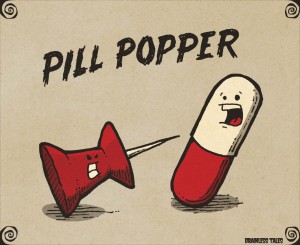 Oral non-steroidal anti-inflammatory drugs (NSAIDs; COX-2 selective and non-selective) are a cornerstone of management of equine arthritis. I think it probably made the list for specific conditions in humans because doctors don’t want people gulping NSAIDs like candy (even though some do). For horses there are lots of options, especially phenylbutazone (“bute”), flunixin (Banamine®) and firocoxib (comes as Equioxx® paste). Firocoxib is sometimes given off-label as Previcox® tablets, which are made for dogs, and, according to the American Veterinary Medical Association, shouldn’t be used in horses, although the reason why has nothing to do with whether the tablets are actually effective. Topical NSAIDs come mostly as Surpass® cream, which is the drug diclofenac. It’s hard to say how well it works in horses because the drug has to get through the horse’s thick skin, and can get picked up in the blood vessels along the way and moved right out of the area. At least one study has shown that when you rub the cream on the horse’s knee, none of it gets in the joint.
Oral non-steroidal anti-inflammatory drugs (NSAIDs; COX-2 selective and non-selective) are a cornerstone of management of equine arthritis. I think it probably made the list for specific conditions in humans because doctors don’t want people gulping NSAIDs like candy (even though some do). For horses there are lots of options, especially phenylbutazone (“bute”), flunixin (Banamine®) and firocoxib (comes as Equioxx® paste). Firocoxib is sometimes given off-label as Previcox® tablets, which are made for dogs, and, according to the American Veterinary Medical Association, shouldn’t be used in horses, although the reason why has nothing to do with whether the tablets are actually effective. Topical NSAIDs come mostly as Surpass® cream, which is the drug diclofenac. It’s hard to say how well it works in horses because the drug has to get through the horse’s thick skin, and can get picked up in the blood vessels along the way and moved right out of the area. At least one study has shown that when you rub the cream on the horse’s knee, none of it gets in the joint.
 CATEGORY #3 (Things that we’re not sure about)
CATEGORY #3 (Things that we’re not sure about)
If you look at this group, you’ve got a whole bunch of treatments that people make noise about, and advertise heavily, but for which there still isn’t good evidence of effectiveness. Here’s the list again, so you don’t have to scroll up: acupuncture, avocado soybean unsaponfiables, chondroitin, crutches (uh, no, not in horses), diacerein, glucosamine, intra-articular hyaluronic acid, opioids (oral and transdermal), rosehip, transcutaneous electrical nerve stimulation (TENS), and ultrasound.
Let’s deal with the ones that you may not be familiar with first. Diacerein is a drug that is not approved in the US. In Europe, where it has been approved, it’s not been concluded that the risks of using the drug outweigh the benefits. Enough said. Opioids aren’t used for arthritis in horses, mostly because they’re so unpredictable. Many horses get very excited when given opiods, so pretty much nobody uses them. TENS and ultrasound units get pulled out in some circles (especially performance horse circles) but there’s not really any data to support their use in horses with arthritis.
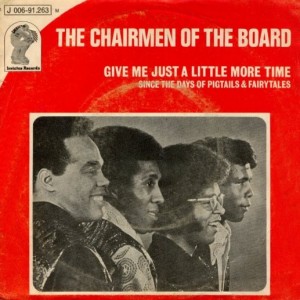 That leaves a whole bunch of stuff that you’ve heard about and is also available for horses: acupuncture, avocado soybean unsaponfiables, chondroitin, glucosamine, intra-articular hyaluronic acid, and rosehip (for those of you that are “naturally” inclined). I think that it’s really telling that the OARSI guidelines doesn’t really support any of them. And I also think that it’s telling that most of them have been around for decades.
That leaves a whole bunch of stuff that you’ve heard about and is also available for horses: acupuncture, avocado soybean unsaponfiables, chondroitin, glucosamine, intra-articular hyaluronic acid, and rosehip (for those of you that are “naturally” inclined). I think that it’s really telling that the OARSI guidelines doesn’t really support any of them. And I also think that it’s telling that most of them have been around for decades.
ASIDE: Can you imagine if you were assigned to a project when you were right out of college, and four decades later, when your boss came to ask him how things were going, you said, “Well, it’s looking promising, but we need some more time?” In medicine, it doesn’t take very long to show that things really work. The fact that the therapies on the list still don’t make the grade says something really important (that is, they probably don’t do anything important).
 NOTABLE BY THEIR OMISSION: There are all sorts of other things that are being done to horses with arthritis that aren’t on the list. Among them are Adequan®, stem cells, shock wave, fatty acid supplementation, platelet rich plasma (PRP), MSM, and DMSO (dimethylsulfoxide), to name a few. Herbal and botanical therapies don’t make the list. And there are probably a few more that I haven’t heard about yet. The two main reasons such therapies aren’t on the list are most likely 1) They don’t work, or, 2) They’re considered experimental therapies in humans. Adequan® isn’t available for humans. I think that says something, too. I mean, can you imagine how much money there is to be made for the Adequan® folks if their product could be shown to work in people? I don’t recommend any of these products for treating arthritis in horses, but you can certainly find plenty of opportunities to try them, if you’re so inclined.
NOTABLE BY THEIR OMISSION: There are all sorts of other things that are being done to horses with arthritis that aren’t on the list. Among them are Adequan®, stem cells, shock wave, fatty acid supplementation, platelet rich plasma (PRP), MSM, and DMSO (dimethylsulfoxide), to name a few. Herbal and botanical therapies don’t make the list. And there are probably a few more that I haven’t heard about yet. The two main reasons such therapies aren’t on the list are most likely 1) They don’t work, or, 2) They’re considered experimental therapies in humans. Adequan® isn’t available for humans. I think that says something, too. I mean, can you imagine how much money there is to be made for the Adequan® folks if their product could be shown to work in people? I don’t recommend any of these products for treating arthritis in horses, but you can certainly find plenty of opportunities to try them, if you’re so inclined.
OH, ONE MORE THING: Surgery is occasionally an option, especially for arthritis of the pastern (“ringbone”). That’s a joint that can be surgically fused, with very good results in the majority of the horses. Surgery isn’t cheap, but it’s a really good option for selected horses. And, of course, in humans, the whole joint can be replaced, but that’s not an option in horses: at least not yet.
 Really, there are so many “options” for treating osteoarthritis that it’s hard to keep track of all of them. Even so, when it comes to arthritis, keep in mind another of the Ramey Rules:
Really, there are so many “options” for treating osteoarthritis that it’s hard to keep track of all of them. Even so, when it comes to arthritis, keep in mind another of the Ramey Rules:
IF THERE ARE LOTS OF DIFFERENT TREATMENTS FOR SOMETHING, IT PROBABLY MEANS NONE OF THEM ULTIMATELY WORKS VERY WELL.
The plain fact is that nobody has the cure for arthritis for your horse. And, since arthritis is a condition in which the pain tends to come and go, many therapies will appear to “work,” at least for a while.
NOTE: You may have found some therapy that appears to “work” for your horse. If you have, continued good luck. For some perspective, CLICK HERE to read my article, “But it Works for Me!”
I think that the OARSI guidelines can provide you with a lot of useful direction. Hope they help!

